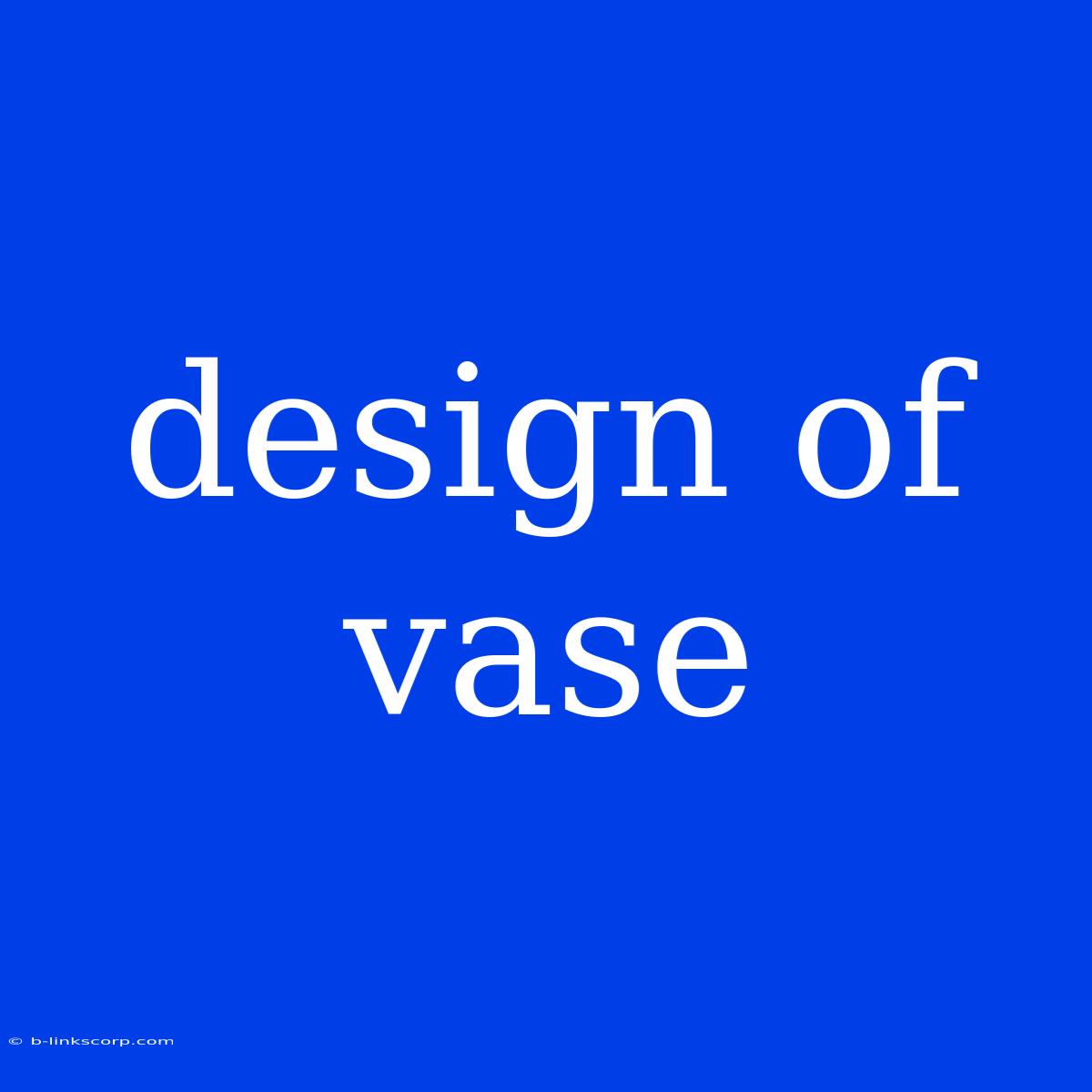The Art of the Vase: Exploring Design and Function
Vases, often overlooked as simple decorative elements, are actually intricate pieces of design that hold a rich history and profound artistic significance. They are more than just containers for flowers; they are sculptures, expressions of creativity, and reflections of cultural trends.
A History of Design
The history of vase design stretches back millennia, evolving alongside human civilization. From the ancient Egyptian vases, with their hieroglyphic inscriptions and geometric patterns, to the delicate Chinese porcelain vases of the Ming Dynasty, each era brought new styles and materials.
H2: Key Design Elements
A successful vase design balances form and function, taking into account the following factors:
H3: Shape and Silhouette:
- Classic Shapes: Cylindrical, spherical, and bulbous forms offer a timeless elegance.
- Modern Shapes: Asymmetrical, angular, and geometric shapes bring a contemporary feel.
- Sculptural Shapes: Vases that resemble animals, abstract forms, or even human figures add a unique artistic touch.
H3: Materials:
- Ceramic: Earthenware, porcelain, stoneware - each offers its own texture and aesthetic.
- Glass: Clear, colored, or textured glass allows for a variety of visual effects.
- Metal: Silver, copper, brass, and iron provide durability and a touch of elegance.
- Wood: Natural wood textures and grain patterns offer warmth and organic appeal.
H3: Surface Decoration:
- Glazing: Vases can be glazed in a wide range of colors and finishes, from matte to glossy.
- Painting: Hand-painted designs, intricate patterns, and bold strokes can add personality.
- Engraving: Detailed carvings and etching add depth and texture.
H3: Functionality:
- Opening: The size and shape of the opening affect the type of flowers that can be displayed.
- Neck: A narrow neck can help to focus attention on the flowers, while a wide neck allows for larger arrangements.
- Base: A stable base is essential for preventing the vase from tipping over.
Modern Vase Design: Pushing the Boundaries
Contemporary vase design continues to innovate, blurring the lines between functional and artistic. Modern designers are experimenting with new materials, textures, and forms. Some key trends include:
- Minimalism: Simple, clean lines and neutral colors are hallmarks of contemporary design.
- Sustainable Materials: Recycled materials, reclaimed wood, and sustainable ceramics are gaining popularity.
- Interactive Design: Vases that incorporate light, sound, or even movement add a new dimension to the experience.
The Art of Arranging
The design of a vase is only one part of the equation. The art of arranging flowers within a vase is equally important. Consider:
- Flower Selection: Choose flowers that complement the vase's shape and style.
- Color Harmony: Create visual interest by using contrasting or complementary colors.
- Balance and Proportion: Balance the weight and height of the flowers within the vase.
Conclusion
Vases are more than just containers; they are artistic expressions that reflect culture, history, and design trends. By understanding the key elements of vase design, you can appreciate the beauty and craftsmanship of these objects, and even create your own unique arrangements that bring life and beauty to your home.

